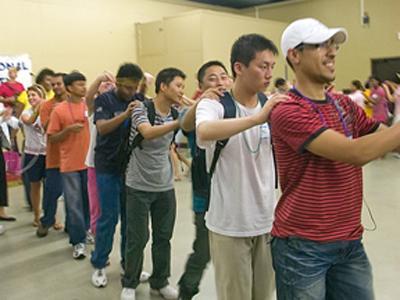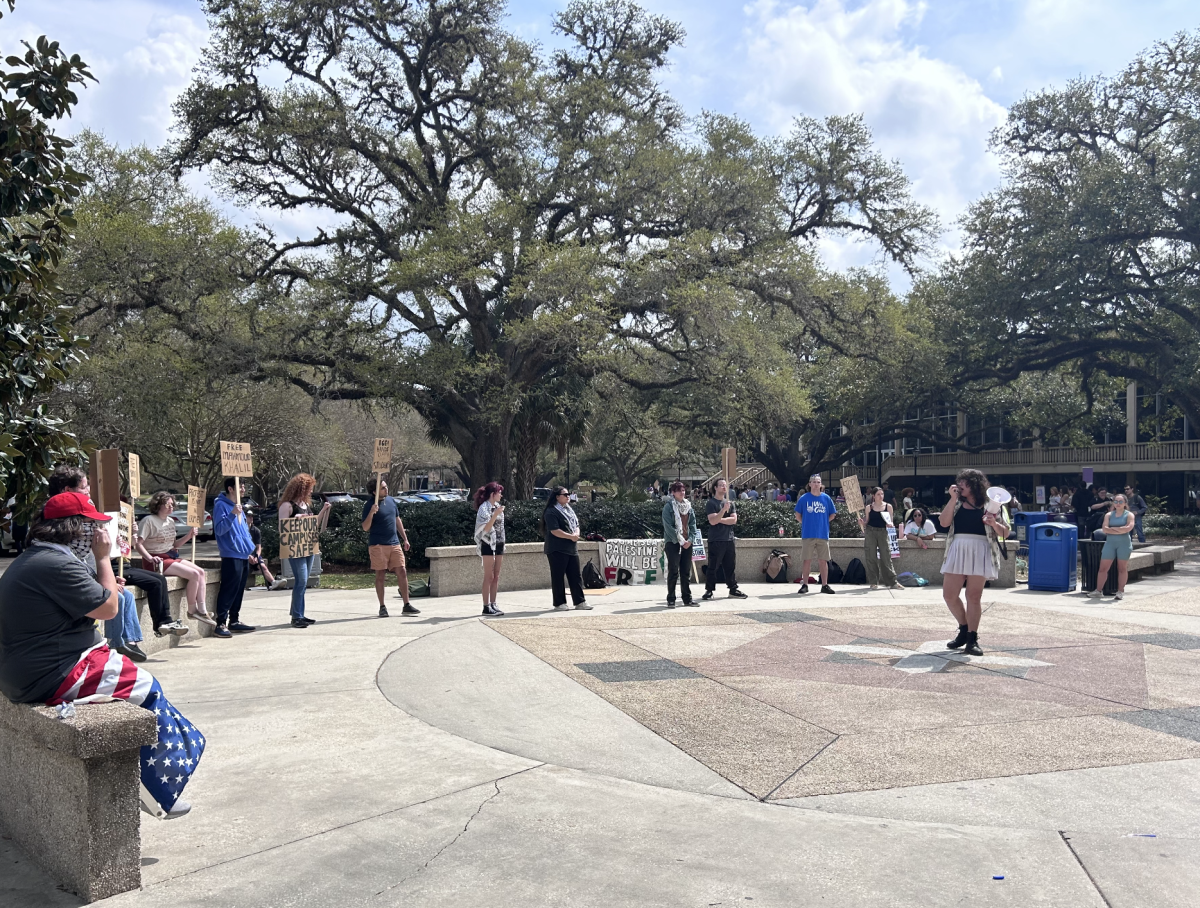Chris Williams looks like any other Louisianian at first glance. But after exchanging a few words with a fellow student, he cannot fool anyone about his background.His thick Scottish accent is a dead giveaway. He enrolled in the University as one of about 1,500 international students who face the challenge of adjusting to the American lifestyle. A total of 1,511 international students from 113 countries attended the University last fall, according to the International Services Office Web site. About 25 percent of those students were new to the University. International Services Director Natalie Rigby said she does not expect enrollment numbers to change much this year, though they will not be finalized until Sept. 2, the last day to register.Mary Parker, executive director of Undergraduate Admissions, said her department recently launched an aggressive international recruitment campaign which included advertising in international publications, traveling abroad, alumni outreach and cooperation with campus international programs. Parker said her office spends about $15,000 per year on international recruitment. Parker said the University is aiming to increase the undergraduate international student population from less than 2 percent of the student body to between 3 and 5 percent within the next five years. Virginia Grenier, International Hospitality Foundation executive director, said usually about 75 percent of international students are graduate students.PAYING THE WAYParker said international students pay the same tuition as out-of-state students with an additional $10 fee for the International Cultural Center. She said her office offers about 40 full and partial scholarships per year to international students. She said selection is based strictly on academic merit, and the department offers only about 10 full scholarships each year. Full scholarships include full tuition, and partial scholarships cover the difference between in-state and out-of-state tuition, she said. Harald Leder, Academic Programs Abroad interim director, said comparing U.S. tuition rates to those in other countries is difficult because most countries fund public universities with taxes. “The U.S. is certainly the highest-priced market when it comes to higher education,” Leder said. Shanaka Abeynanda, first-year math graduate student from Sri Lanka, said he chose the University because of its research opportunities. Abeynanda pays part of his tuition costs by working as teacher’s assistant, and his fee bill totals about $1,000 per semester. Abeynanda lives in graduate student housing at Nicholson Apartments. He said the apartments are similar to dorms in Sri Lanka, but he would live in other campus apartments if they were less expensive.”I know there are much better places here than Nicholson,” Abeynanda said. A two-bedroom apartment in Nicholson Apartments costs $2,500 per semester, and a two-bedroom apartment in East or West Campus Apartments costs $3,590, according to the Residential Life Web site. GETTING SETTLEDThe International Cultural Center was responsible for finding temporary housing for international students waiting to move into housing on- and off-campus. Hewitt said about 20 students needed temporary housing from Aug. 14 until the beginning of school, and other students and community members opened their homes. Andrey Simonov, accounting graduate student from Russia, said the accounting department required him to arrive at the University on Aug. 10 to complete review classes, take written and spoken English tests and deal with social security issues. But Simonov said his on-campus apartment was not available until Aug. 18. He said he slept on a blanket on the floor of an accounting department employee’s home until his housing situation was settled.”My car [was] parked full of stuff, and somebody can break in and take it,” Simonov said.Simonov said his graduate student apartment, at Nicholson Apartments, was not ready because it still needed some cleaning and repairs.”It’s not very convenient for many students,” Simonov said. Williams spent five days in temporary housing in Acadian Hall before moving into his McVoy Hall dorm.”It would have been nice to get into housing right away,” Williams said.Williams said he was required to arrive on Aug. 9 and spent almost a week cooped up in a dorm with very few scheduled activities. He said the people were nice, but he would have preferred attending a regular student orientation program closer to the start of school.ACADEMIC DIFFERENCESSimon Brown is a history and English junior from England. He said his major in England is American studies, but the University does not offer an equivalent program of study. Brown said classes are more formal in the U.S.; he is accustomed to addressing his teachers by their first names and said teachers are often more liberal than students in the U.K. Nafees Alam, finance junior from Bangladesh, works at the International Cultural Center and answers students’ questions about American laws and societal norms. He said students often approach him with questions about race issues, specifically which words are inappropriate. Maureen Hewitt, ICC manager, said students come to her most often about housing problems and interpersonal issues. Hewitt said international students’ problems can sometimes be very serious and require legal assistance. She said “very logical misinterpretations” of American culture have led to behavioral issues and even arrests in a few extreme instances. Grenier said it is important the University community receives international students with kindness.”When they go home, they are the experts on the USA,” Grenier said.Williams’ first impressions of the U.S. seem to be pleasant; he said people are generally much more friendly in the U.S. than in the U.K., and he’s quickly making new acquaintances on campus.”Seemingly, we’re renowned on the campus so far for our parties,” Williams said. “I’m not sure if that’s a good thing.”Williams said he will miss his friends, the Scottish accent and the good beer of his home country. Rigby said the most common majors among international students are engineering, Internet technology, computer science and business. Parker said the most popular majors among undergraduates are business, engineering and architecture. Parker said the two largest enrollment groups of graduate international students are from India and China. She said the largest undergraduate enrollment groups are from Latin America, Africa, the Middle East and Asia, respectively. Parker said the University is focusing on recruiting international students from Central and South America, mainly because that area is home to a large alumni base.————Contact Emily Holden at [email protected]
International students experience culture shock while adjusting to life in U.S.
August 27, 2009

International students second line August 14th at the International student party hosted by the International Hospitality Foundation.



